Owned and maintained by WES since 1998, the 82nd Drive Bridge connects Gladstone and Oregon City for walkers, joggers and bicyclists who use it to cross the Clackamas River. Built in the early 1920s, the bridge was converted for pedestrian use after the construction of Interstate 205 was completed in the mid-1970s.
The bridge also carries sanitary sewer pipes and other important utility lines.
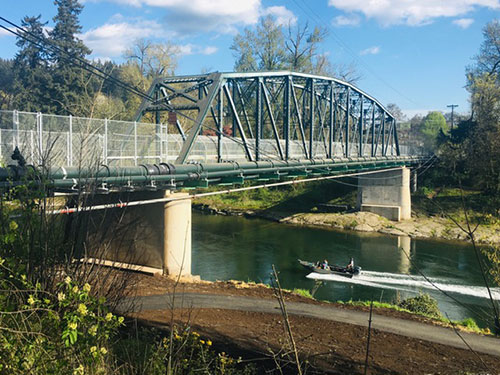
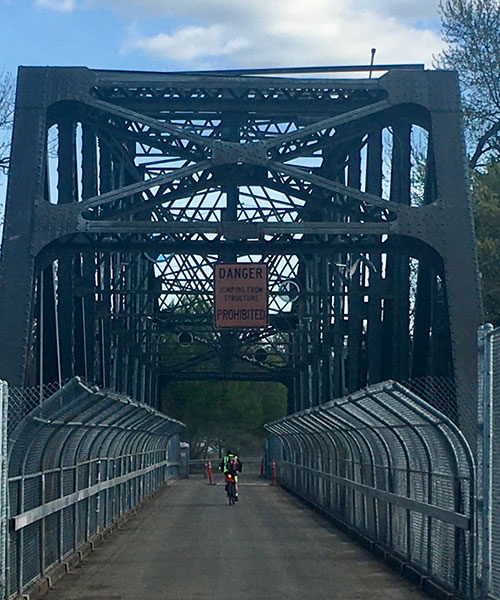
In 2020, Clackamas Water Environment Services (WES) reopened the 82nd Drive Pedestrian Bridge to pedestrians and bicyclists after completion of several upgrades, which include seismically-retrofitting the bridge to withstand a magnitude 9.0 earthquake. The bridge is now capable of providing vital passage for emergency vehicles across the Clackamas River should such a catastrophic earthquake occur.
The upgrades also include newly-installed sanitary sewer pipes and provide additional protections for pipes and utility lines that run across the bridge.
“Increasing resiliency is the driving force behind all WES projects,” said WES Director Greg Geist. “WES is proud to support Clackamas County’s priorities, which include building a strong infrastructure and ensuring safe, healthy and secure communities.”
The $3.6 million project was funded with monthly service charge revenue and system development charges. WES secured required permits with the cooperation of the cities of Oregon City and Gladstone, the Oregon Department of Environmental Quality and the Oregon Department of State Lands. WES also collaborated with the Oregon Department of Transportation and the Clackamas County Department of Transportation and Development.
Built in the early 1920s, the bridge was once a state-owned thoroughfare for automobiles to cross the Clackamas River. The bridge was converted for pedestrian use after I-205 opened to traffic in the 1970s. In 1998, WES bought the bridge from the City of Gladstone in order to install sewer pipes that divert flows from WES’ Kellogg Water Resource Recovery Facility in Milwaukie to its Tri-City Water Resource Recovery Facility in Oregon City.
Charting the Bridge Upgrades
February 2020
As upgrades on the bridge wound down, crew members were focusing their work on pipes carried by the bridge across the river, including the installation of a new forcemain and bolstering of existing pipes.
January 2020
Work to strengthen the structure of the bridge was finished. Crews installed a new forcemain pipe on the bridge while bolstering existing piping that was carried across the Clackamas River.
December 2019
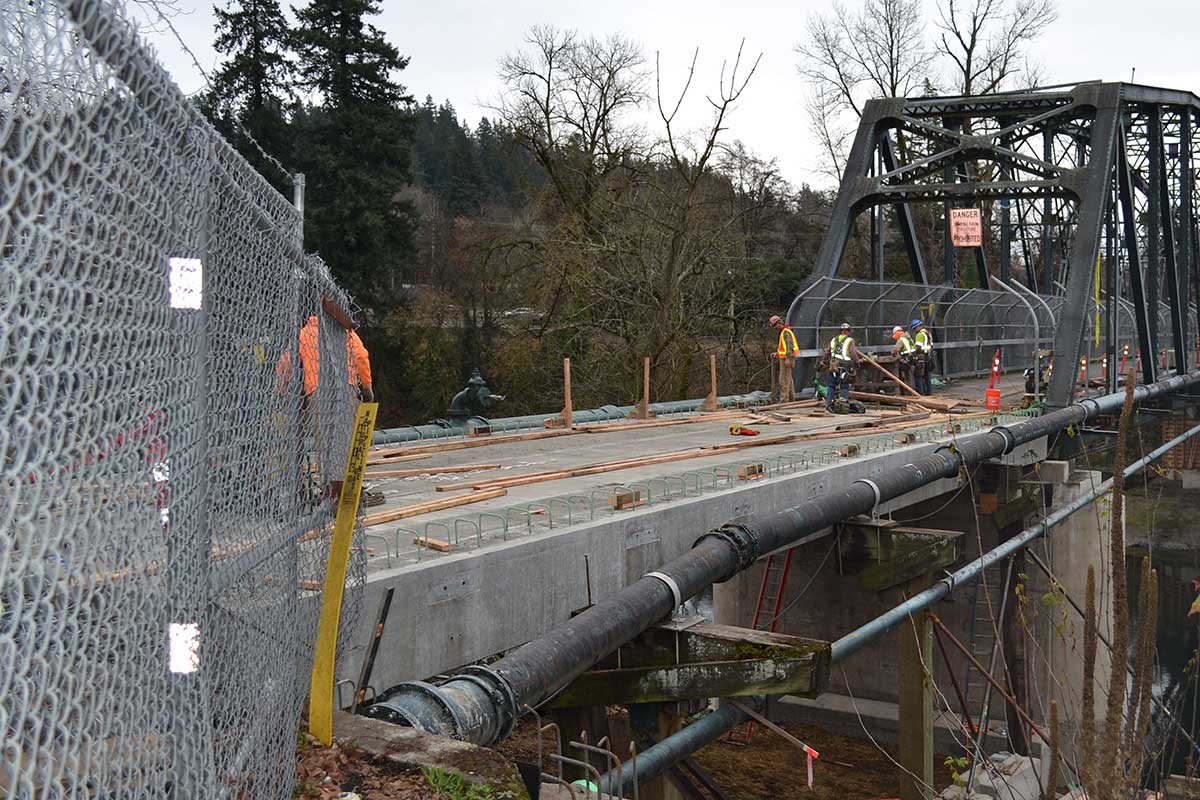
The bridge deck was replaced while work to strengthen supports under the bridge took place. Seismic upgrades were made to mechanical connections that attach the bridge deck to the supports. Crews also installed new force main piping and completed upgrades to existing piping that the bridge carries across the river.
November 2019
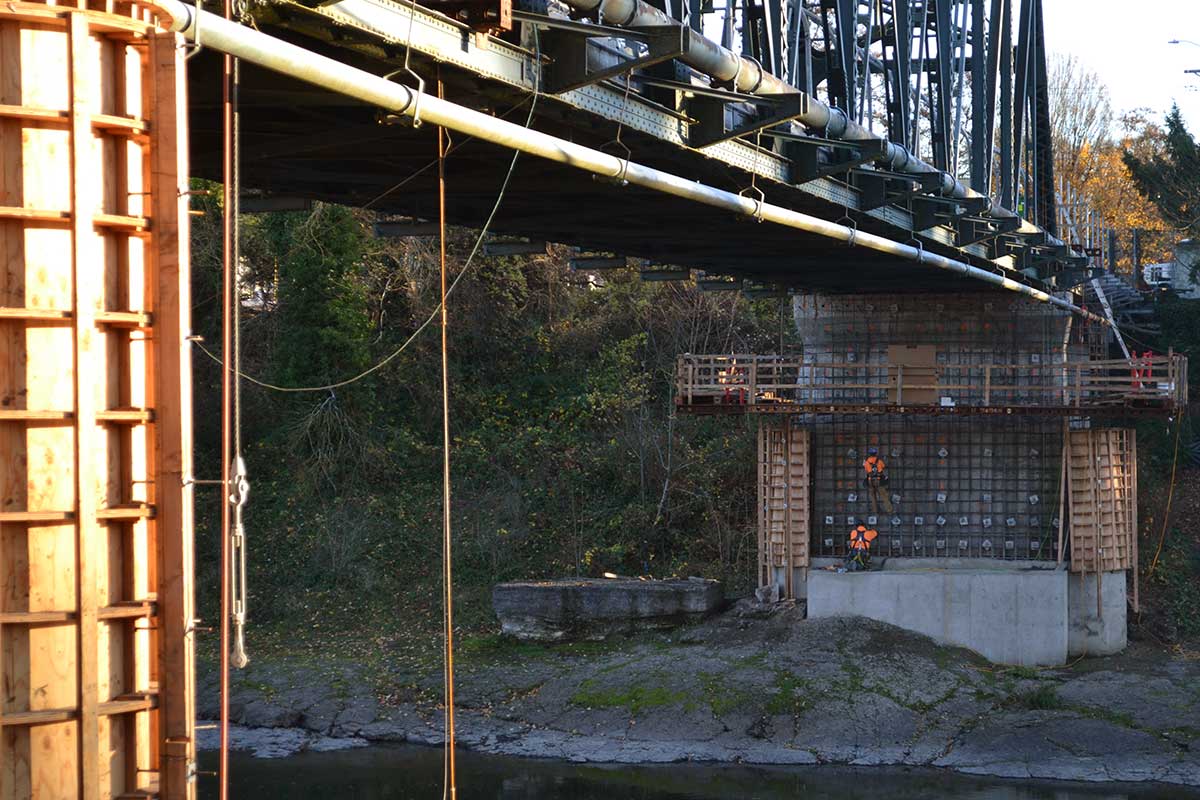
Structural supports for the bridge were strengthened. Rock anchors were installed to stabilize the piers while pilings were driven into the ground to support the bridge where it connects to the road on the Gladstone side of the river. Existing piers were bolstered with concrete and rebar work. Steel beams were placed between the roadway on the Gladstone side and the first concrete pier, which allowed for the installation of the new deck.
October 2019
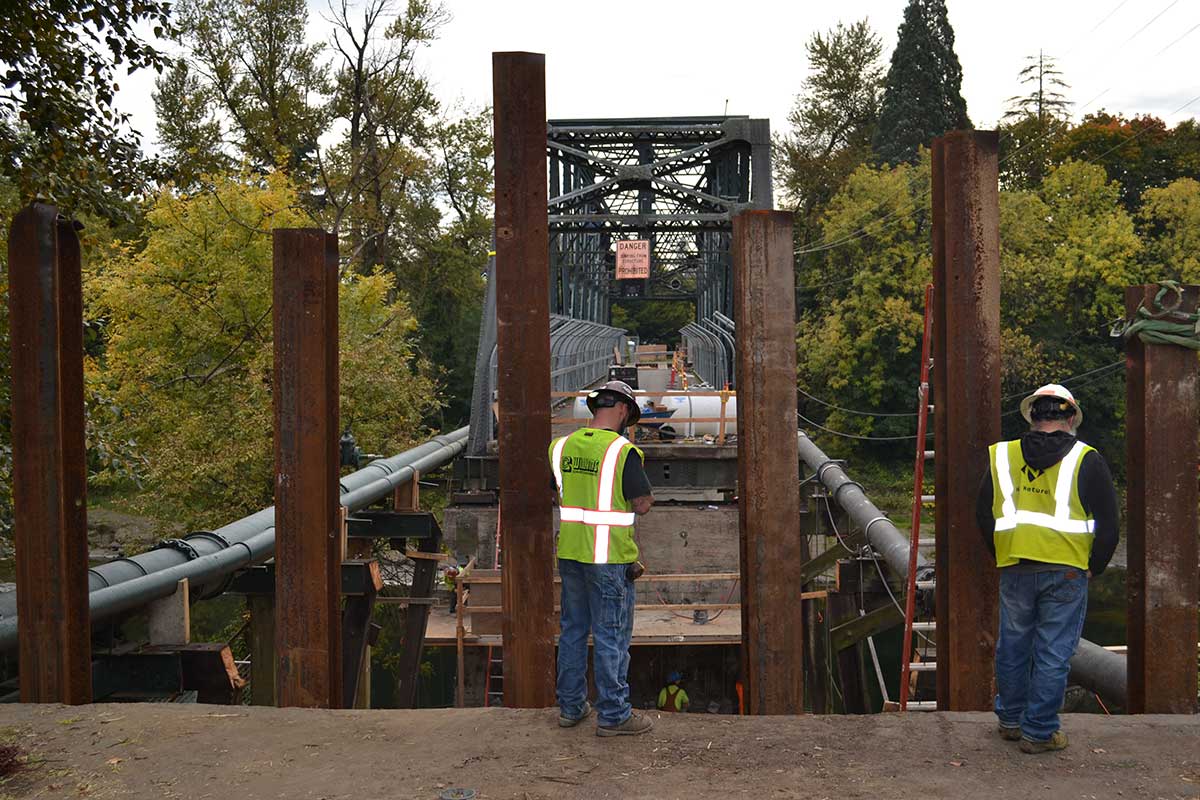
Pile driving on the Gladstone side of the bridge was completed while old wood timber supports and the bridge deck on the Gladstone side were removed. Work continued on strengthening the existing bridge piers and adding new supports. All in-water work was completed.
Bridge Charms
Dedicated August 28, 2009
Artists: Dale Wilhelm and James Schmidt
“Bridge Charms” is a sculptural work that consists of suspended stainless steel cable strung through the girders at either end of the 82nd Drive/Park Place Pedestrian Bridge. From the cable, dangle objects, bejeweling the bridge like a charm bracelet. The ornamental pendants represent the recreational uses of the Bridge/Clackamas River area, the natural aspects of the region and the historical references of the region. Additionally, circular colored pendants reflect color onto the Bridge and the surrounding environment. After extensive research and feedback from the stakeholder committee, WES employee and bird aficionado Dan Strong, Oregon City Mayor Alice Norris, and Erik Thorsgard and Tony Johnson, Cultural Liaisons from the Grande Ronde Confederation, the artists selected the following objects for the pendants:
- Bicycle
- Fly Fishing
- Chinook Paddle
- Fish Skeleton
- Canoe
- Model-T Automobile
- Wagon Wheel
- Old-fashioned Tree Saw
- Cedar Osprey Sneaker (shoe)
- Salamander Salmon
- Old fashioned Faucet
- Merganser (duck)
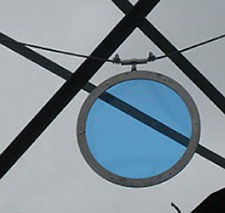
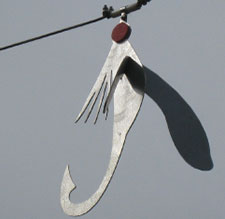

 Translate
Translate







